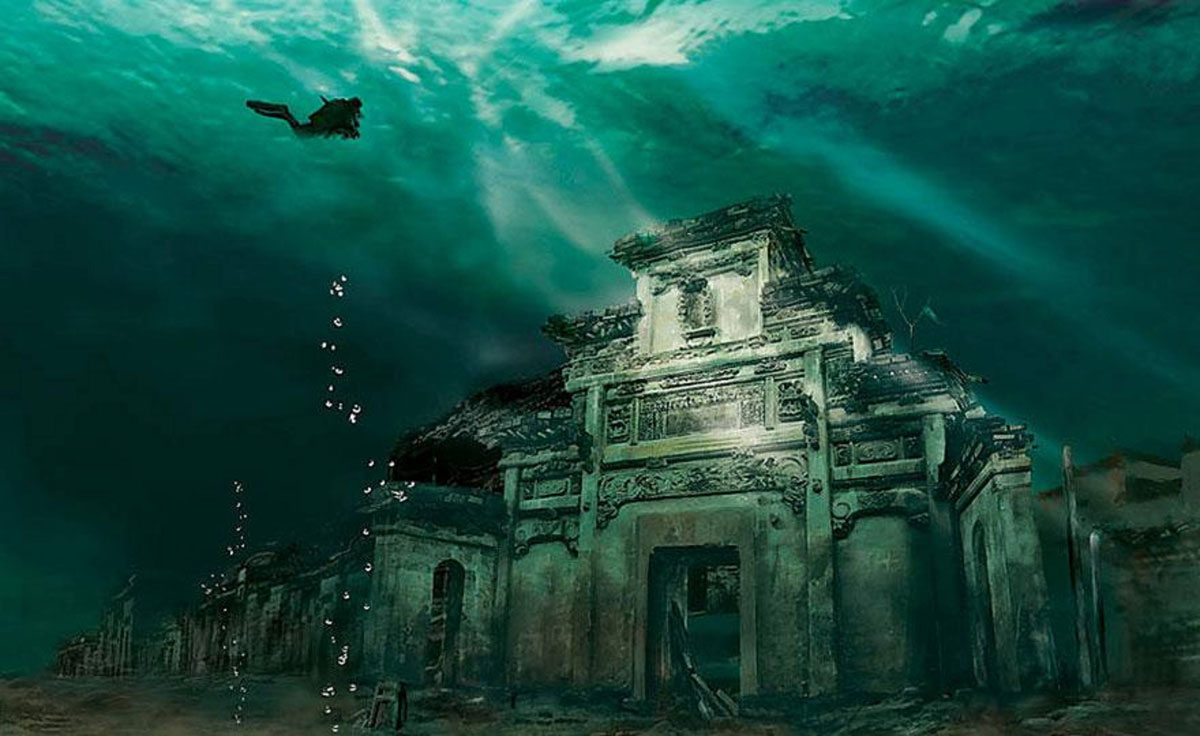The might of nature is no match for humans, with entire cities and civilizations falling victim to its powers and vanishing from the world and humanity’s memory. Take Pompeii, a city forgotten for millennia after being devastated by Vesuvius. It was only in 1592 that the city was rediscovered, and its story is hardly unique, as there are countless other findings like it, though not all of them are on the surface. In this article, we’ll tell the stories of 7-ish cities that have been taken by a different element – water, some of which you could visit right now.
Yonaguni Monument, Japan
The sea near the Yonaguni island, the southernmost of the Ryukyu Islands in Japan is a popular destination for divers, as a large population of hammerhead sharks resides there during the winter. In 1986, Kihachiro Aratake was diving in the area and noted some structure on the seabed resembling architectural remains. Subsequently, several archeological and amateur expeditions were made in the area, with the Japanese Agency for Cultural Affairs and several international experts concluding that the structures found in the are natural formations rather than archeological ruins.

Thonis-Heracleion, Egypt
Excavations in the Abu Qir Bay area in Egypt continue to this day, with new and new Egyptian and Greek temples, treasure-laden ships and other priceless findings being uncovered. It’s unbelievable how just in the early 1990s, the ancient city of Heracleion and Thonis were believed to be nothing but a myth.
In fact, until the city was found just some 32 km (20 miles) northeast of Alexandria under 10 meters (30 ft) of water, historians were convinced that the city of Thonis and Heracleion were two distinct places. Today, we know that the city had two names, a Greek and an Egyptian one and that the city at the mouth of the Nile described in Herodotus’ chronicles was, in fact, very real.
Dwarka, India
Sanskrit texts tell of the ancient city of Dwarka, a magnificent kingdom of unimaginable wealth and glory built by the Hindu god Krishna himself. Until the year 2000, the city was believed to be the stuff of myth, but then, India’s National Institute of Ocean Technology found the ruins of a large port city 40 meters (131 ft) down on the surface of the Gulf of Khambhat.
Today, the ruins of the ancient city are among the most well researched underwater ruins in India, and numerous ancient artifacts, such as sculptures, pottery, and even human bones have been brought to the surface. There is also evidence of the remains of a large port in the city, suggesting overseas trade.

Kalyazin, Russia
To see the tip of the iceberg of what this city used to be, so to speak, you don’t need any diving equipment, it’s right there, in the middle of the Uglich Reservoir on the Volga river. Kalyazin is a city with a rich history dating back to the 12th century, with its most prominent landmark throughout centuries being the neoclassical Monastery of St. Nicolas.
Today, however, one can see only the tall bell tower of the monastery rising above water level of the Uglich reservoir that was created in 1940.

Port Royal, Jamaica
Once known as the “wickedest city on earth”, two-thirds of Port Royal, the former seat of the British Government and the largest city in the Caribbean, were dragged beneath the ocean as a result of a massive earthquake followed by a devastating tsunami in 1692.Until the cataclysm had befallen Port Royal, the city’s port was a beloved spot for pirates and various outlaws, which is how the city earned the above-mentioned nickname.

Shi Cheng, China
This nearly 1,400-year-old Chinese city was nearly forgotten, although it was submerged during the creation of Hin’an river dam only in 1957. As a result of an initiative of building a hydroelectric power station, Shi Cheng now finds itself 25-40 meters (85-131 ft) below the water. The city architecture is scattered with rare examples of Ming and Qing Dynasty buildings, such as pagodas, temples, and archways with intricate carvings of lions and dragons.

Baiae, Italy
Let’s start this list off with the Underwater Archeological Park of Baia, an ancient Roman city now engulfed by the Tyrrhenian sea that’s very close to other famous tourist destinations, such as Pompeii and Naples. Today, the city is one of the few underwater archeological parks in the world, offering travelers the opportunity to admire the ruins of the once famous Roman resort via glass-bottomed boats, snorkeling, or even scuba diving.

